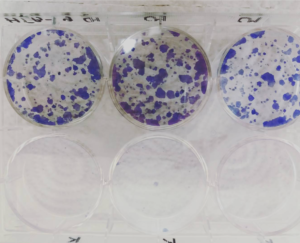
Credit: @charlotta_m / Instagram
Cells that have lost their ability to divide and grow may hold the key to reverse chronic respiratory diseases like COPD and Alzheimer’s.
Throughout life, the DNA of cells become damaged; some fix the damage, others die off, and then there’s the category that go into “retirement”. Those retiring body cells go into cellular senescence, entering a state where they can no longer divide and grow.
In the short term, cellular senescence is helpful; for example, cellular senescence is an effective anti-cancer mechanism, both in stopping spread of malignancy and limiting tumor growth. These cells also have benefits to heal wounds and repair tissue.
However, according to John Sedivy from Brown University quoted in The Atlantic, senescent cells also secrete molecules that stimulate inflammation and enzymes that kill connective tissue.
These senescent cells build up with advanced age, and those that stay too long become the cause of age-related tissue deterioration and chronic age-related diseases.
READ: Double Dose of New Drugs Help Cancer and Rare Diseases
Those diseases include common chronic inflammatory and respiratory diseases such as deadly COPD (chronic obstructive pulmonary disease). Several studies have shown an increased presence of senescence cells in the COPD lung.
These stagnating cells have also been found in the brains of Alzheimer’s disease patients.
The removal of senescent cells could help prevent age-related diseases, but the mechanisms underlying their accumulation is not fully understood. Scientists believe additional research could provide promising treatments for these diseases.
For more information, find the Science Direct article here.










